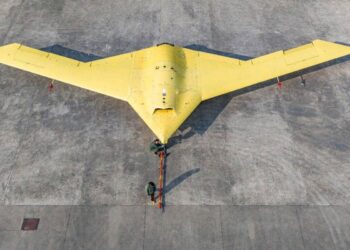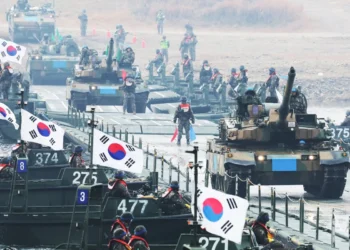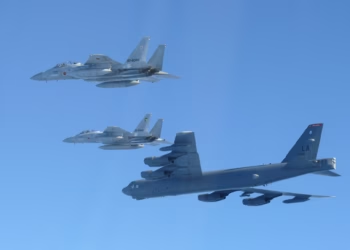TOKYO (Realist English). Japan has taken a major step toward becoming a significant player in the global arms market after Canberra selected Mitsubishi Heavy Industries (MHI) as its preferred supplier for a new class of frigates. The $6.5 billion deal, announced this week and expected to be finalised early next year, represents Japan’s first export of a complete defence platform with lethal capabilities since the Second World War.
Analysts say the agreement could serve as a template for future Japanese exports of warships, missiles and radar systems, but warn that production capacity, labour shortages and limited overseas maintenance experience remain hurdles.
“This deal is a major breakthrough for Japan,” said Hirohito Ogi, senior research fellow at the Institute of Geoeconomics and a former defence ministry official. “It will further motivate Japanese defence companies to seek other international opportunities.”
The upgraded Mogami-class frigates offered by MHI require a crew of just 90 — compared to 120 for the German Thyssenkrupp proposal — while delivering greater range and weapons capacity. Japan pledged to deliver the first vessel by 2029 to replace Australia’s retiring Anzac-class frigates and ensure interoperability with the US Navy. Three of the ships will be built in Japan, with the remaining eight constructed in Australia in partnership with Austal.
Despite a higher upfront cost, Canberra projects lower lifetime expenses due to reduced weapons and personnel costs and longer hull life. Jennifer Parker, a former naval officer and associate at the Australian National University’s National Security College, described the Japanese design as “clearly, on paper, the best ship” for Australia.
The deal comes amid rising Indo-Pacific tensions, overstretched US defence supply chains, and a global surge in military spending. It also fits into broader cooperation under AUKUS, with Tokyo and Canberra exploring joint work on stealth and undersea autonomous technologies. Japan is already co-developing a next-generation fighter jet with the UK and Italy and has advanced capabilities in missile defence and space technologies.
In 2014, Tokyo lifted a decades-old ban on most arms exports. In 2023, it amended its rules to allow Patriot missile transfers to the US to replenish stockpiles sent to Ukraine. However, arms exports remain politically sensitive, with lethal sales permitted only to countries not engaged in active conflict.
Japan’s domestic defence demand is rising as the government targets 2% of GDP in military spending by 2027, straining industry capacity. Kawasaki Heavy Industries chair Yoshinori Kanehana recently warned that order volumes are outpacing production capabilities, saying: “We don’t have enough people… it is now time for us to increase capacity.”
Corey Wallace, associate professor at Kanagawa University, noted that managing overseas supply chains will be a new challenge for Japan’s defence industry. Delays or delivery issues could strain relations with Australia, but success would bolster Japan’s credibility as a supplier.
“There are many tier-two and tier-three military powers that can’t afford US equipment,” Wallace said. “Japan now has a fantastic opportunity to prove itself and secure a lasting position in the global arms market.”


















